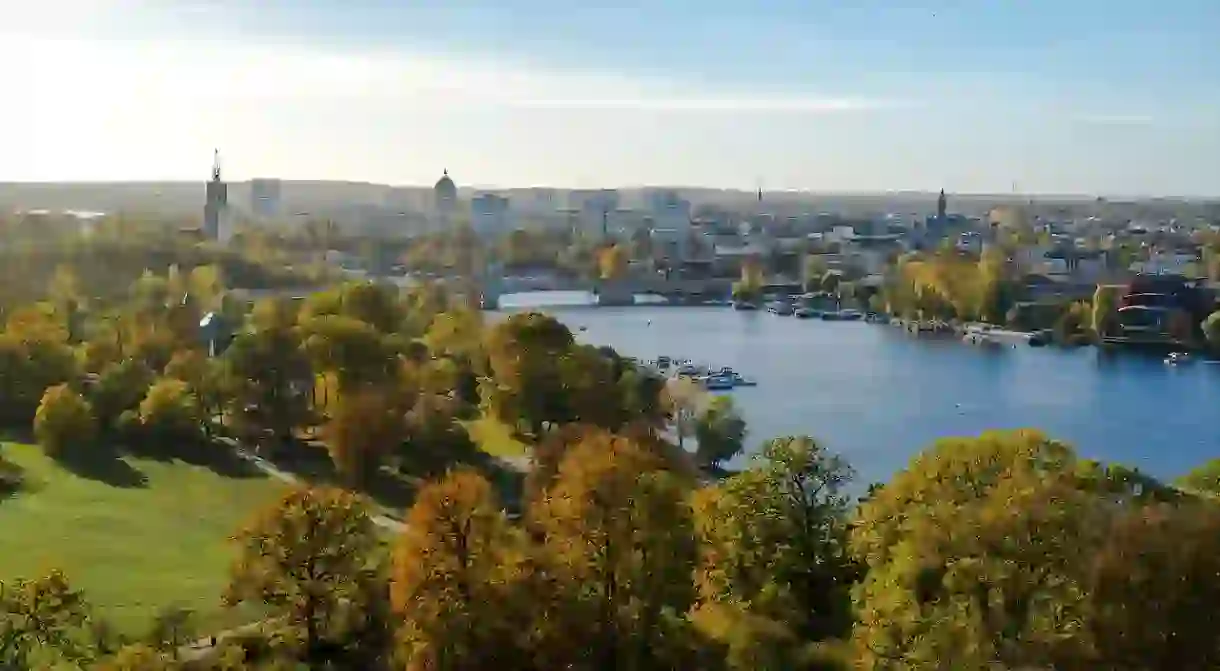10 Things You Didn't Know About Potsdam

Potsdam is an area abundant in gardens, parks, palaces and lakes. It offers a breathtaking panorama of culture and history, and a few surprising fun facts to boot. Here are a few things about this delightful town you may not have known.
It’s most famous for its castles
Although Potsdam was heavily damaged by allied bombing in 1945, most of the palaces – including its most famous one located in Sanssouci Park – remained intact. Schloss Sanssouci was built as a residence for the Prussian kings in 1747, and can be found just west of Sanssouci Park’s historic centre.

It’s a historical town
Most of Potsdam’s many sights were built during the eighteenth and nineteenth centuries, when the city was the residence of the Prussian kings, and the garrison outpost was transformed into one of Europe’s most beautiful royal cities. The Prussian kings, in particular Frederick William I and his son Frederick the Great, reinvented Potsdam and the surrounding area. The popular Neuer Markt square is one of the best-preserved baroque squares in Europe.

It’s full of UNESCO World Heritage sites
In 1990, and while Germany was still trying to unite, the palaces and parks of Potsdam were awarded UNESCO World Heritage status. The original site included Sanssouci, Neuer Garten, Babelsberg, Glienicke and Pfaueninsel. However, in 1992, the UNESCO site was extended to include Sacrow Palace and park and Saviour’s Church. In 1999, another 14 monuments joined the list, including Lindstedt Palace and park and Belvedere Palace on Pfingstberg hill. All in all, the heritage site covers approximately 500 hectares of parkland, and includes 150 buildings.
It’s the the capital of the state of Brandenburg
Potsdam is the capital of Brandenburg. While it is not part of the city of Berlin, it’s only 24 kilometres away, making it a popular day trip from the capital. It also has its own, older version of the Brandenburger Tor, although it is much smaller than its counterpart in Berlin.

It’s the Birthplace of European film production
Babelsberg in Potsdam is Europe’s biggest and oldest film studio, where more than three thousand productions have been made. Some of Germany’s most famous films were created here, including Metropolis in 1927 and The Blue Angel in 1930, which starred Marlene Dietrich. It was once considered Europe’s Hollywood, but after the Nazis came to power, many actors and artists moved to America.

It’s an educational centre
Not only does Potsdam have a plethora of great architects and scholars to its name, but it has over 30 research institutes and universities, including the University of Potsdam, the Fachhochschule and the College of Film and Television, which is located in Babelsberg. Rent is also decidedly cheaper than in Berlin!
Everywhere is within easy cycling distance
In Potsdam, nothing is far away. The beautiful town is small enough to be explored by bicycle, and there are some epic routes that take you past all the incredible sights, allowing you to explore the town quicker than if you were doing so by foot.
There’s history on the waterways
No visit to Potsdam would be complete without a trip along the city’s waterways on a beautiful old steamboat. When you reach Glienicke Bridge, which connects Potsdam to Berlin, you’ll be at the spot where East and West exchanged secret agents and spies until well into the 1980s.

It has a popular Dutch district
During the eighteenth century, Potsdam attracted a large number of foreigners. Some, like the Dutch, Flemish and Swiss, came to Potsdam for their craftsmanship, and a settlement of 134 red brick houses was built for the Dutch immigrants. The mostly three-storey houses have typical Dutch style gables, although the gardens in front of the houses are no longer there. This Dutch district, known as the Holländisches Viertel, is very popular with tourists.

…and it also has a Russian Town
In the nineteenth century, many Russian soldiers came to live in the city. They formed part of a choir whose job it was to entertain the Prussian troops. In 1826, The king ordered the construction of a new neighbourhood for these soldiers. The ‘Russian town’ was named Alexandrowka after the Tsarina. Twelve charming wooden houses were built and a small Russian-orthodox chapel called the Alexander-Newski kirche was added later.














